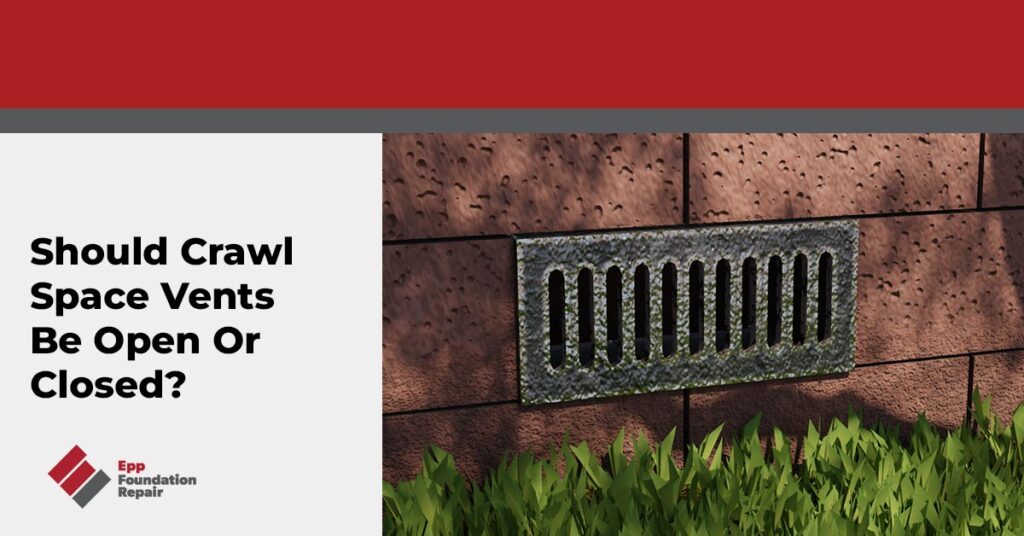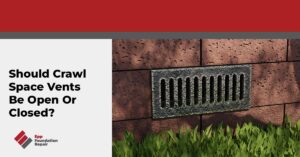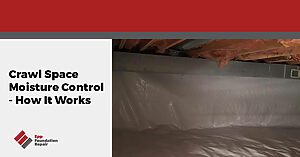Searching for information on whether vents for a crawl space should be open or closed? If so, don’t hit that back button because you’ve landed on the right page. In this article, we’ll cover whether or not crawl space vents are necessary, if they should be open or closed, how moisture gets into a crawl space and more.
Are Crawl Space Vents Necessary?
No, despite popular belief, crawl space vents are not necessary. In fact, they can even do more harm than good. Crawl space vents allow moisture to enter the area, leading to mold growth which can damage the wooden structures in the crawl space.
Additionally, crawl space vents can let in pests, such as rodents and insects, which can cause damage to insulation and wiring.
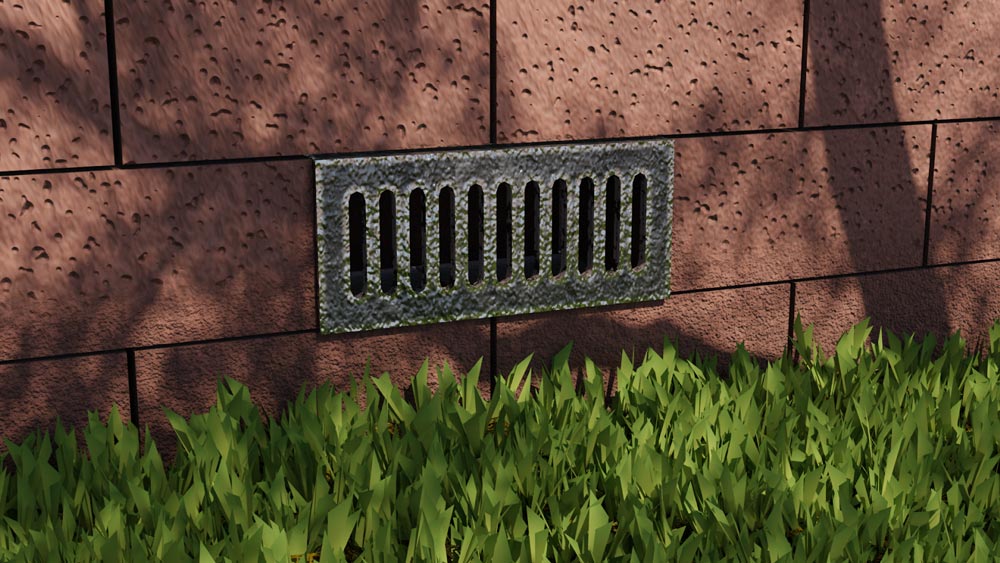
It is much more effective to properly insulate and seal (i.e., encapsulate) the crawl space to prevent moisture and pests from entering. This also has the added benefit of improving energy efficiency and possibly reducing heating and cooling costs. We’ll talk more about crawl space encapsulation in just a bit.
How Does Moisture Enter A Crawl Space?
Moisture can enter a crawl space through a variety of pathways, including the following:
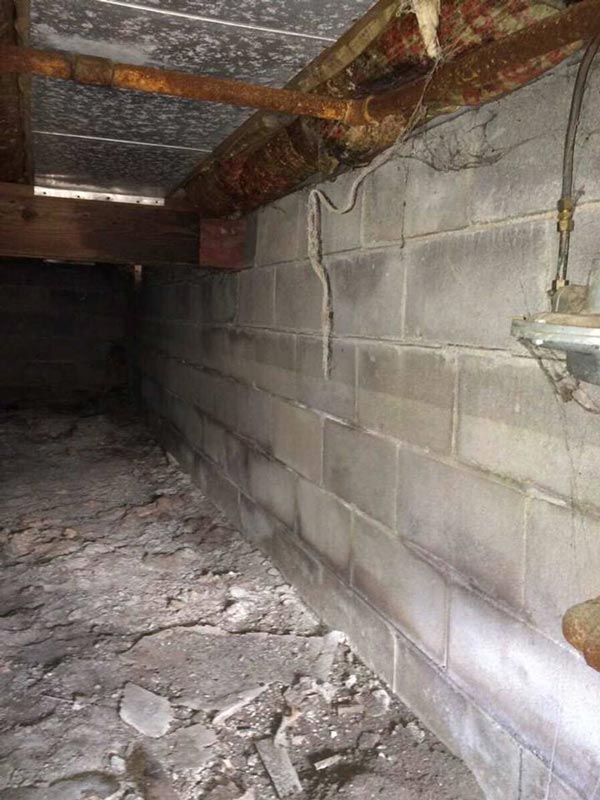
- Moisture enters through cracks in the foundation walls.
- Moisture enters through open vents. Warm, humid air flows into the crawl space and condenses on cooler surfaces.
- Groundwater seepage is another common cause of crawl space moisture infiltration, especially in areas with high water tables or heavy rains. There may even be standing water in the crawl space. Excess moisture in the soil around the foundation will contribute to an elevated moisture level in the crawl space.
- Plumbing leaks
Even relatively small amounts of moisture in a crawl space can create an environment conducive to mold growth and decay. Therefore, it’s essential to actively monitor crawl spaces for moisture infiltration and take measures to prevent and address the problem right away to avoid costly damage to the home and potential health hazards.
Should Crawl Space Vents Be Open Or Closed?
People used to think crawl space vents should be open. However, after much research and analysis, the consensus nowadays is that crawl space vents should be closed.
While it may seem reasonable to keep them open for ventilation, it’s quite the opposite. Open vents can lead to various issues, including moisture buildup and insect infestations.
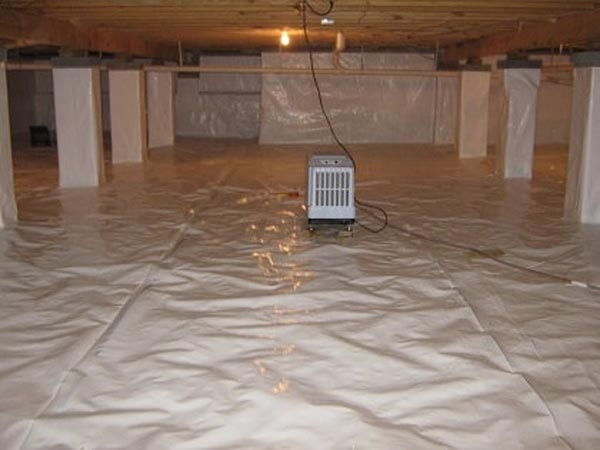
Moisture buildup can cause wood rot and decay, making your home less structurally sound. Crawl space moisture also encourages mold growth. Since some air from the crawl space flows into your home’s living area, anyone living in the house will be inhaling mold spores. This could lead to allergies or respiratory issues. Insects entering via open vents can cause damage to insulation and wiring, leading to costly repairs.
Closing crawl space vents and encapsulating the crawl space (more on this below) will help regulate the temperature in the area and significantly reduce the risk of the issues mentioned above.
Tips For Maintaining A Dry Crawl Space
Maintaining a dry crawl space is crucial to your home’s overall health and safety. Here are some tips to help keep your crawl space in top condition and protect your home from moisture and other hazards.
- Seal all openings – It is important to ensure that all openings, such as vents and cracks in the walls, are sealed to prevent moisture from seeping into the crawl space. This helps to maintain a dry environment and prevents the growth of mold and mildew.
- Install a vapor barrier – A vapor barrier is a layer of plastic sheeting installed over the floor and walls of the crawl space. It helps prevent moisture from entering the crawl space and can save on energy bills by reducing heat loss.
- Improve drainage around the foundation – The best way to do this is to install a drain tile system. More on this below.
- Monitor humidity levels – Humidity levels in the crawl space should be between 30-50%. High humidity levels can lead to the growth of mold and mildew. Therefore, it’s important to monitor the humidity level in the crawl space and use a dehumidifier if necessary.
- Keep the crawl space clean – Regularly cleaning the crawl space is essential in preventing the buildup of debris and pests. Remove any debris that may have accumulated and keep the area free of any junk or clutter.
- Encapsulate the crawl space – This is the best way to maintain a dry, clean crawl space. We’ll talk more about crawl space encapsulation in the next section.
By following the above tips, you can help maintain a dry and healthy crawl space, which will, in turn, keep your home safe and protected. Don’t forget to have your crawl space inspected by a professional if you notice anything unusual.
A Drain Tile System Plus Crawl Space Encapsulation Is The Best Way To Get A Clean, Dry Crawl Space
If you want a clean, dry crawl space under your home, the best way to achieve it is to install a drain tile system and then encapsulate the crawl space.
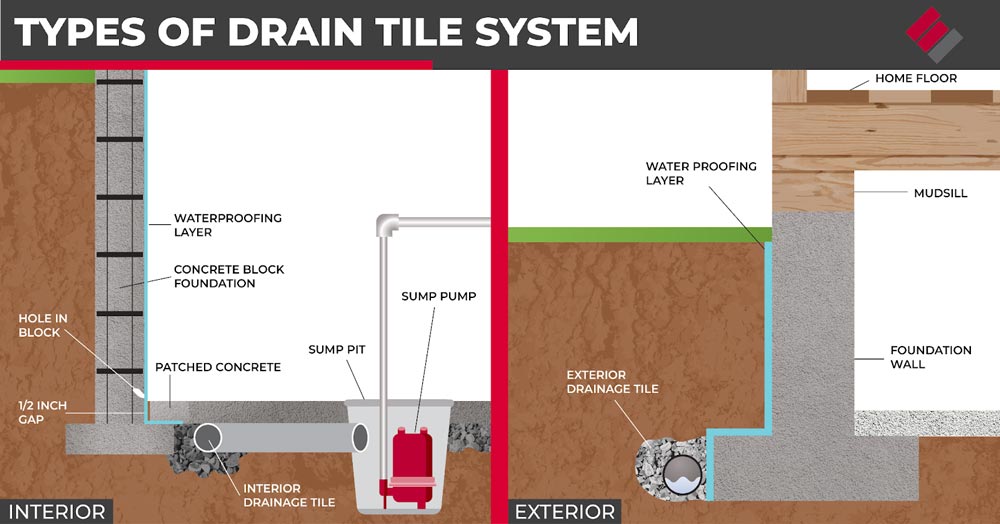
What is a drain tile system?
A drain tile system is a foundation waterproofing system that prevents excess moisture from building up in the soil around the foundation. In other words, it keeps the soil around the foundation dry. There are two types of drain tile systems, exterior and interior.
An exterior drain tile system is installed around the outside perimeter of the foundation at the footing level. The general installation procedure is as follows:
- First, the soil around the foundation is excavated down to the footing.
- A shallow trench is dug and then lined with gravel.
- A perforated drainage pipe is placed into the trench and covered with more gravel.
- The excavated soil is replaced.
Now, any excess moisture in the soil will find its way into the perforated drainage pipe and flow toward a sump pit. Once the pit fills with water, a sump pump will turn on and expel the water a safe distance from the foundation.
An interior drain tile system is installed around the inside perimeter of a crawl space or basement and works the same way. Excess soil moisture goes into the drainage pipe, toward a sump pit, and then ejected away from the foundation via a sump pump.
What is crawl space encapsulation?
Crawl space encapsulation is the process of sealing off the crawl space area under a home from the outside environment. It involves using a thick, vapor-retarding barrier to cover the walls and the floor of the crawl space. We also recommend adding a dehumidifier to ensure the humidity level in the crawl space remains low.
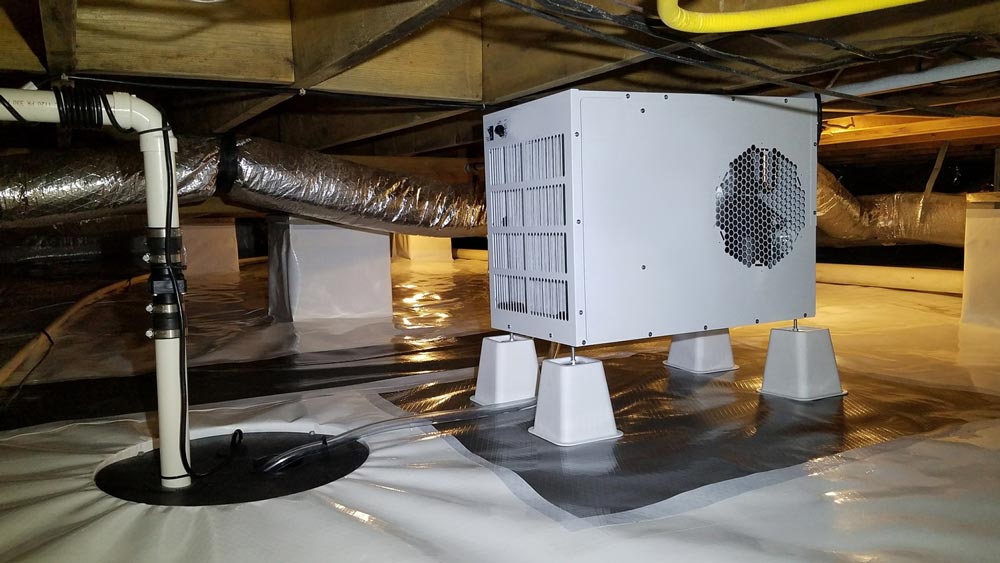
Crawl space encapsulation aims to create a healthy environment free of moisture, pests, and mold. Because, as we noted above, a percentage of air from the crawl space flows into your home’s living area, crawl space encapsulation also helps improve the air quality inside the house.
While we can’t guarantee it, we’ve had homeowners tell us that crawl space encapsulation has saved them money on energy costs. This is probably because when the crawl space is encapsulated, it creates a sealed environment that helps to keep the air in the home at optimal temperatures. This means that HVAC systems don’t have to work as hard to regulate the temperature in the house. As a result, homeowners might see a reduction in their energy bills.
Additionally, crawl space encapsulation can help protect a home’s structural integrity. By sealing off the crawl space, homeowners can prevent moisture from seeping into the area, which can cause rot and decay. This can help extend the life of a home’s foundation and save homeowners a significant amount of money on repairs. A well-encapsulated crawl space can help increase a home’s resale value, as it can be seen as a valuable investment in the home’s longevity and health.
Crawl Space Vents Do More Harm Than Good
Crawl space vents, designed to promote air circulation, are standard in many homes. However, vents can do more harm than good. Specifically, crawl space vents can introduce moisture into the area, creating the perfect environment for mold and other harmful substances to grow.
For this reason, we highly recommend closing your crawl space vents if you haven’t done so already. By sealing off your crawl space from the outside world, you’ll be doing your part to keep unwanted dampness and humidity at bay. This simple step can go a long way in preventing expensive damage to your home and keeping you and your loved ones healthy and safe.
If you’re concerned about the health of your home’s crawl space, contact us today and schedule a crawl space evaluation. Since 1994, we’ve helped clients in Lincoln, Omaha, Southeastern Nebraska, Northwestern Missouri, and parts of Northeastern Kansas with foundation repair, concrete leveling, crawl space encapsulation and basement waterproofing for their homes.

